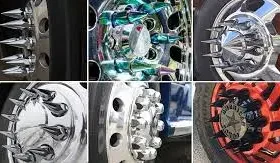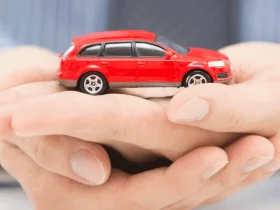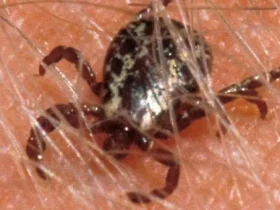Determining how many gallons of gas a car can hold is essential knowledge for both car owners and fuel station operators.
It helps car owners plan their refueling needs and budget accordingly, while fuel station operators can ensure they have sufficient gas reserves to meet the demands of their customers.
Factors That Influence Gas Tank Capacity
While every car model has a specified fuel tank capacity, there are several factors that can influence the actual amount of gas a car can hold. Understanding these factors will help car owners better plan their refueling needs and ensure they have sufficient gas reserves on their long drives.
1. Tank Shape and Size:
The shape and size of the fuel tank can vary from one car model to another. Some tanks are shaped to fit in specific areas of the vehicle, which can affect their overall capacity. Double-check your car’s specifications to determine its exact tank shape and size.
2. Fuel Pump and Ventilation Systems:
Cars are equipped with fuel pumps and ventilation systems that occupy space within the fuel tank. These systems can impact the amount of gas that can be stored. A smaller fuel pump or a more efficient ventilation system can free up more space for fuel storage.
3. Vehicle Weight:
The weight of the vehicle, including passengers and cargo, can affect the overall gas tank capacity. Heavier vehicles may have slightly smaller gas tanks to compensate for the additional weight and maintain optimal fuel efficiency.
4. Fuel Level Sensor:
Most modern cars have a fuel level sensor that determines the accurate amount of gas in the tank. However, these sensors may not be entirely precise, which means the displayed fuel level might not always indicate the exact gas amount.
Determining Your Car’s Specific Gas Tank Capacity
To accurately determine your car’s gas tank capacity, there are a few steps you can follow. First, check your car’s owner’s manual or consult the manufacturer’s website for the specified fuel tank capacity. This information will provide you with the baseline capacity for your particular model.
Next the factors mentioned earlier, such as tank shape and size, fuel pump and ventilation systems, vehicle weight, and fuel level sensor. These factors may slightly affect the actual capacity.
One way to ascertain the precise gas tank capacity is by conducting a controlled experiment. Start with an empty tank, fill it up completely, and record the amount of gas it takes to reach capacity.
Alternatively, you can use online databases or apps specifically designed to provide accurate gas tank capacity information based on your car’s make, model, and year.
Calculation Methods for Gauging Gallons of Gas
When it comes to calculating the number of gallons your car’s gas tank can hold, there are a few different methods you can use. One common approach is to simply multiply the tank’s capacity in liters by 0.26 to get the gallon equivalent.
Another method is to use a fuel transfer pump and a graduated container to measure the exact amount of gas your tank can hold. This can be a more accurate but time-consuming process.
It’s important to note that these calculations may not always be 100% precise due to variations in tank shape, fuel pump systems, and other factors mentioned earlier.
By using these calculation methods, you can have a better understanding of how many gallons of gas your car’s tank can hold, allowing for more efficient trip planning and budgeting.
Tips for Maximizing Fuel Efficiency
Now that you have a better understanding of how many gallons of gas your car’s tank can hold, it’s essential to focus on maximizing your fuel efficiency. By implementing a few simple tips, you can make the most out of every gallon of gas and save money in the long run.
Firstly, check your tire pressure regularly. Underinflated tires can decrease fuel efficiency by up to 3%. Keep an eye on your vehicle’s recommended tire pressure, and inflate them to the proper level.
Secondly, drive smoothly and avoid aggressive accelerations and sudden stops. These habits not only increase your risk of accidents but also waste fuel. Gradually accelerating and decelerating will help you save gas and reduce wear and tear on your car.
Lastly, reduce your vehicle’s weight and drag. Remove any unnecessary items from your trunk that are weighing your car down, as extra weight decreases fuel efficiency.
Safety Precautions
1. Turn off the engine:
Always switch off your car’s engine before refilling the gas tank. This minimizes the risk of ignition and potential fires.
2. No smoking:
It should go without saying, but smoking near a gas station or while handling gasoline is extremely dangerous. The fumes can ignite, causing a fire or explosion. Always put out any cigarettes or other flames before refueling.
3. Use approved containers:
When filling a gas canister, make sure it is approved for holding and transporting gasoline. Using improper containers can result in leaks or spills, exposing you to flammable vapors.
4. Avoid overflows:
Do not overfill your gas tank. When the nozzle clicks off, stop filling immediately and avoid topping off. Overfilling increases the risk of spills and leaks.
5. Stay alert:
While refilling, do not leave the pump unattended. If you notice any unusual smells or liquid pooling around your car, alert the station attendant and have them inspect the situation.
Final Thoughts
Your car’s gas tank capacity and maximizing fuel efficiency is essential for every driver. By knowing how many gallons of gas your vehicle can hold, you can plan your trips accordingly and have a better understanding of your car’s range.
It is important to remember that safety should always be a top priority when refilling your gas tank. Following the safety precautions mentioned earlier can prevent accidents and ensure a secure refueling experience.
It is also important to consider the environmental impact of your driving habits. By driving responsibly and maintaining your car properly, you can reduce fuel consumption and minimize your carbon footprint.










Leave a Reply